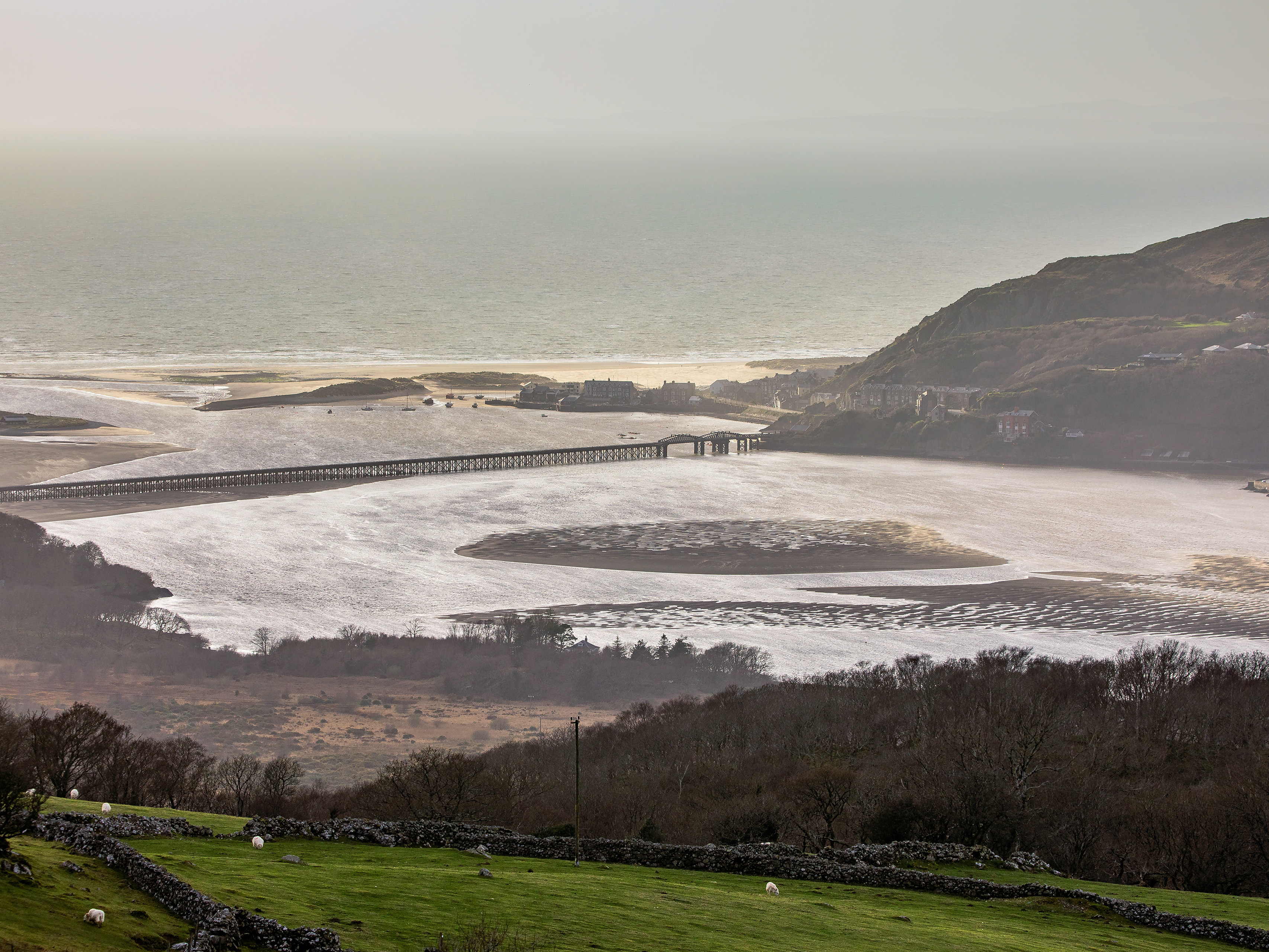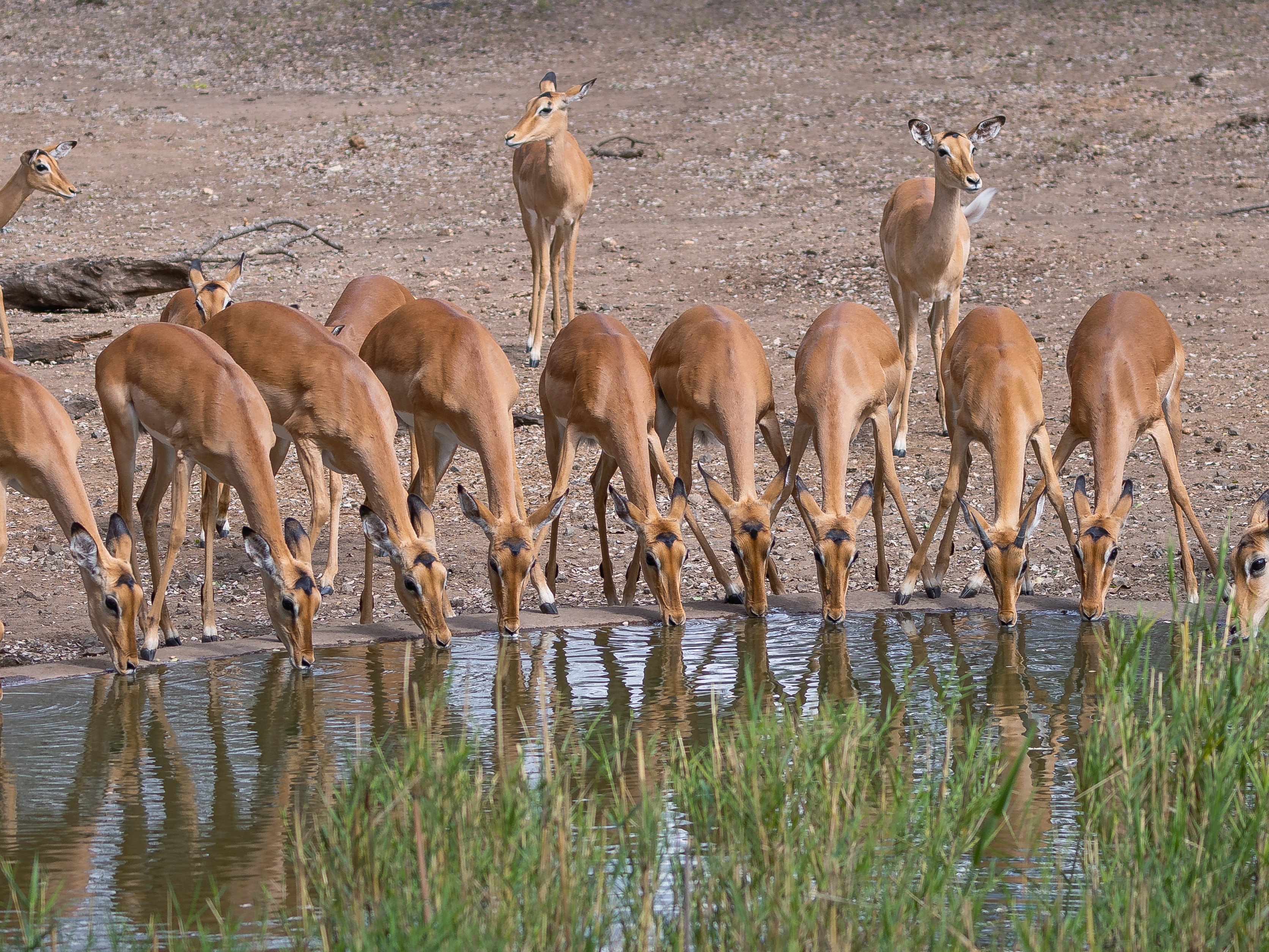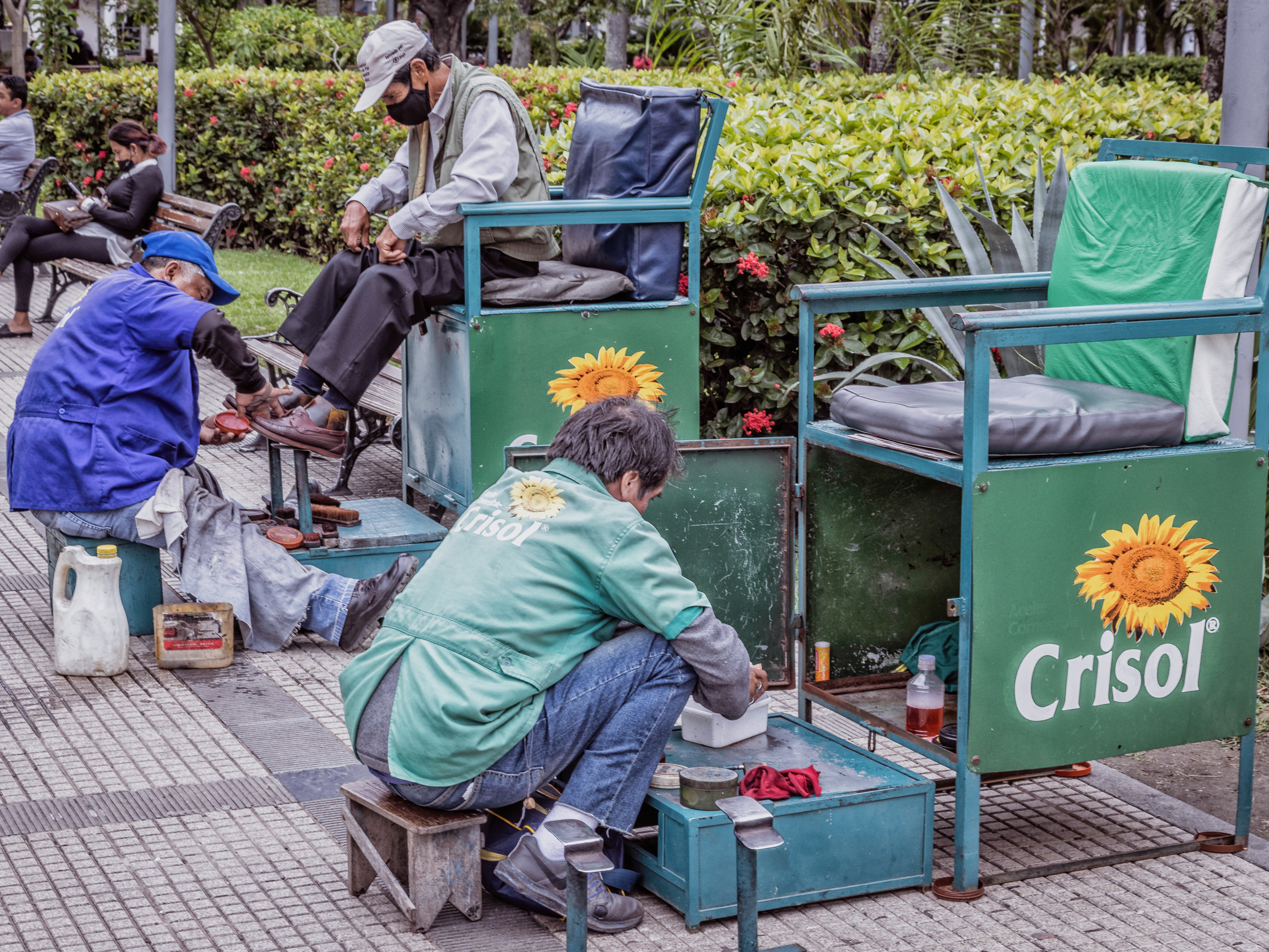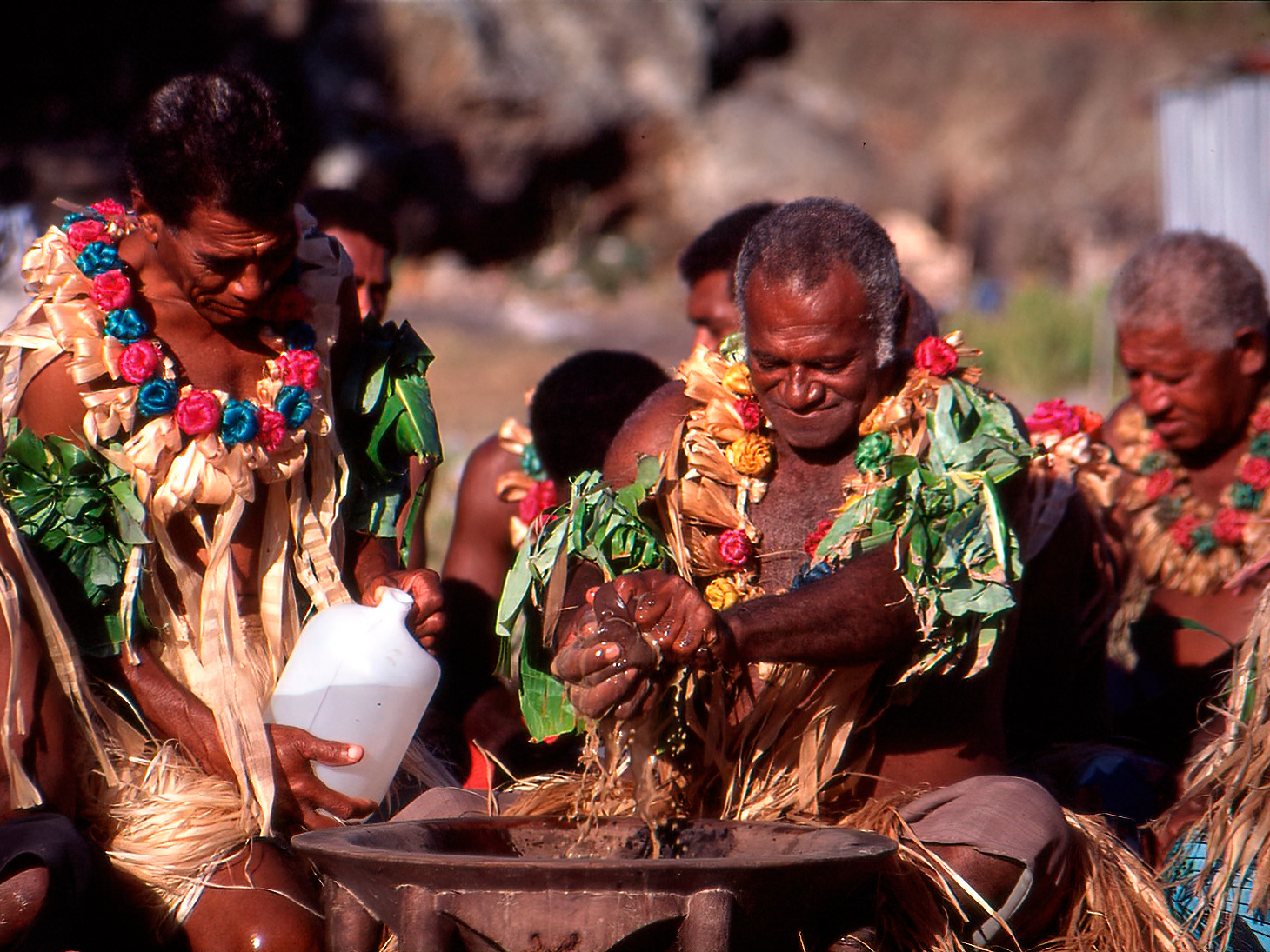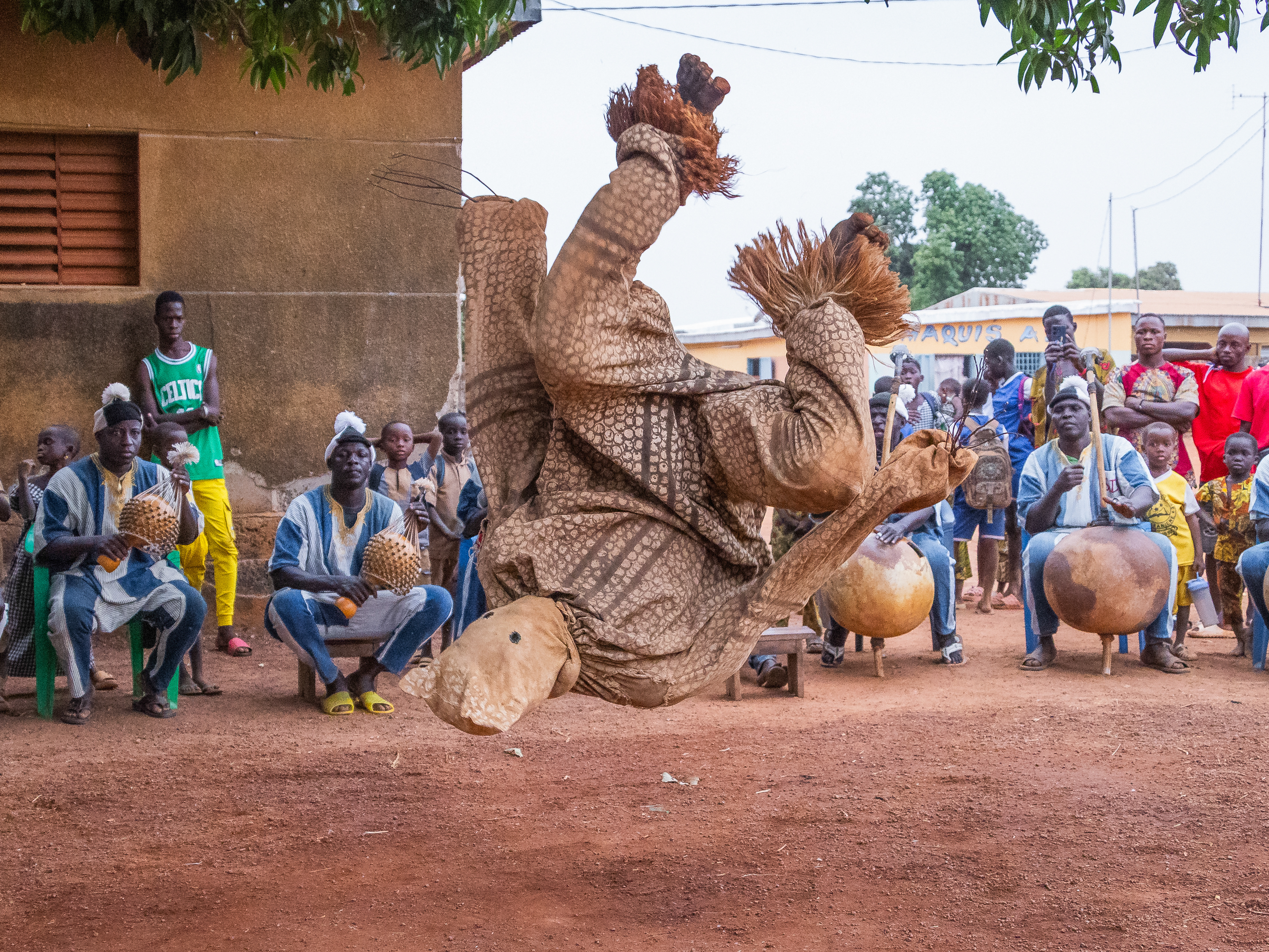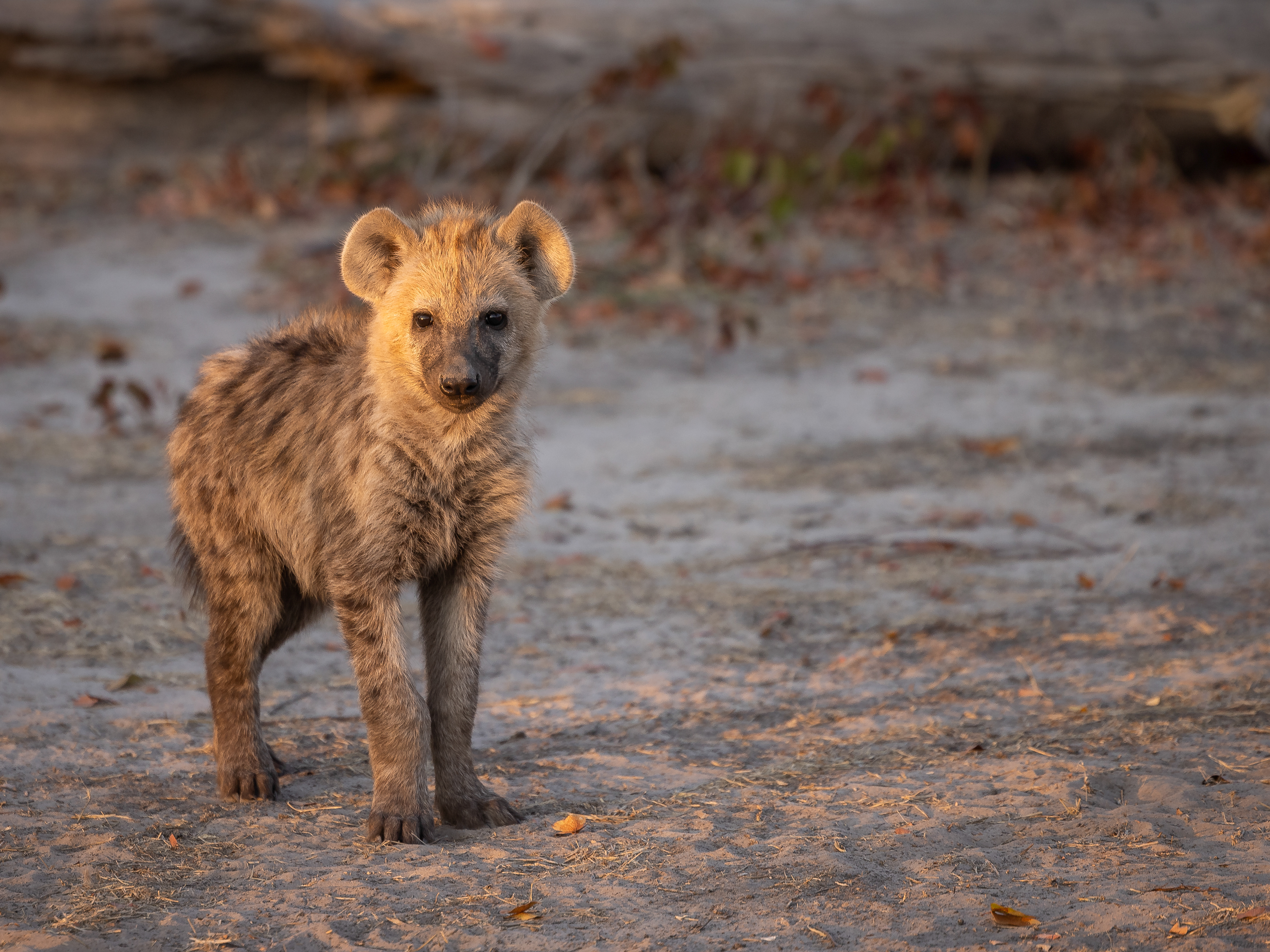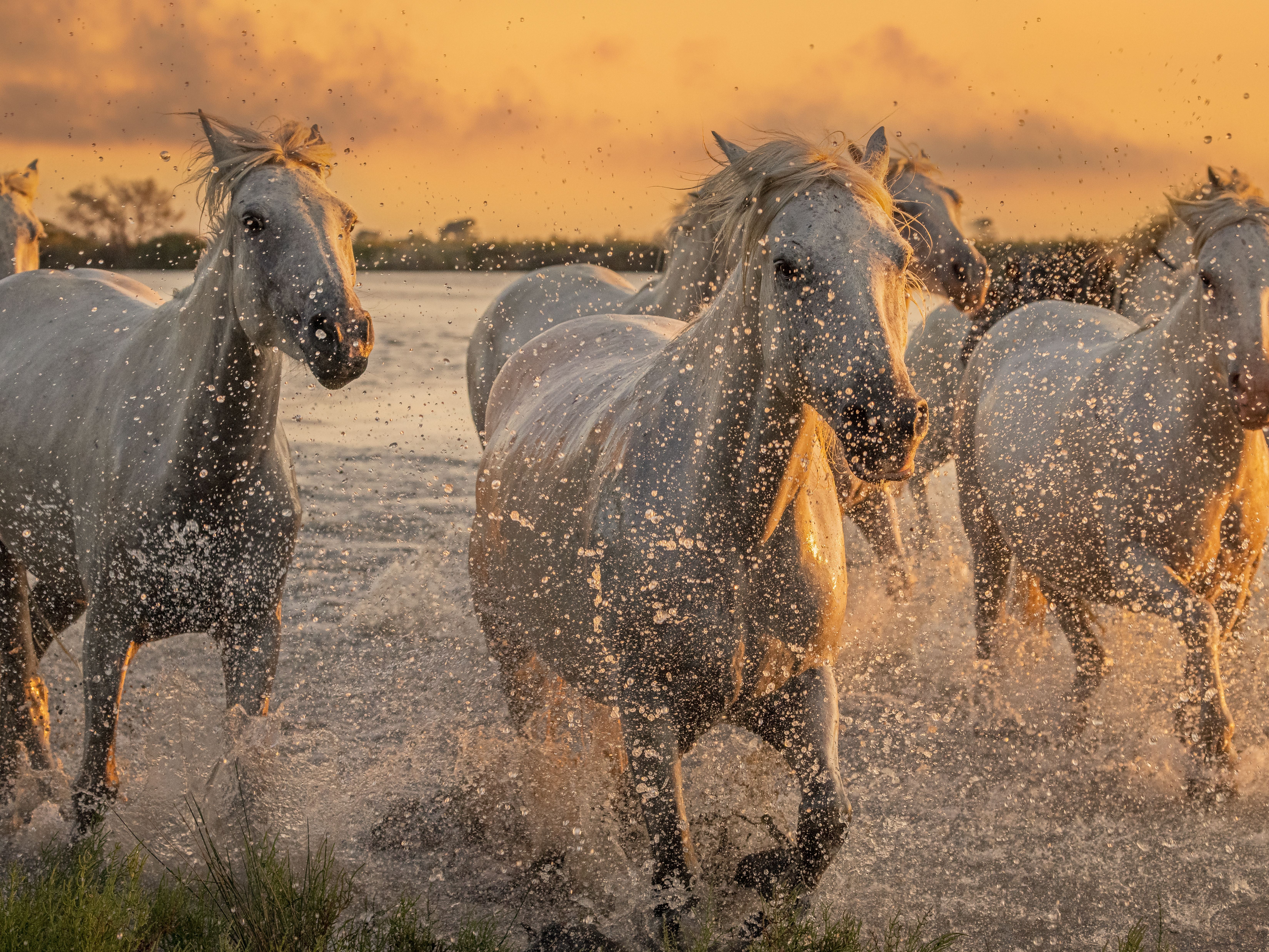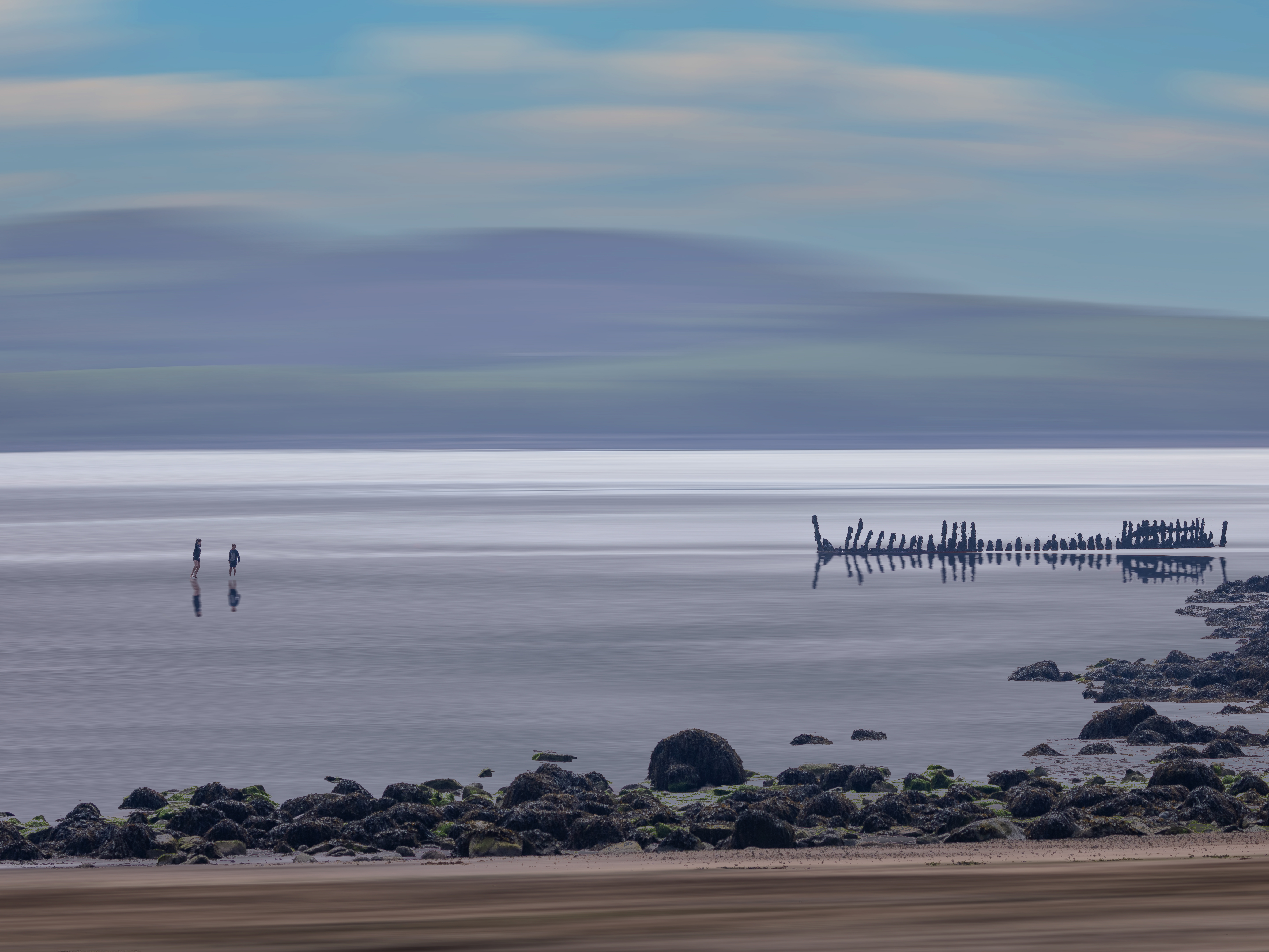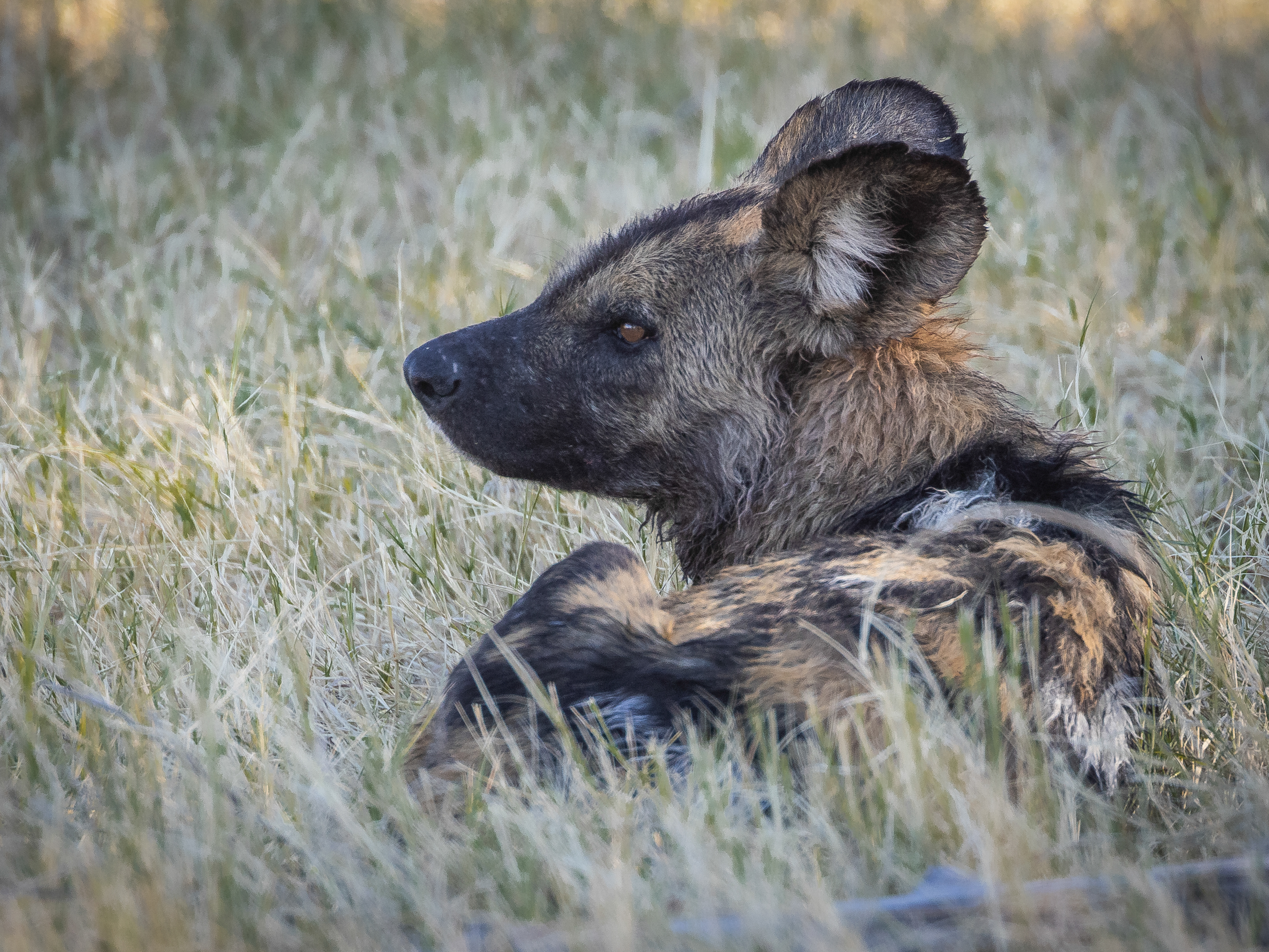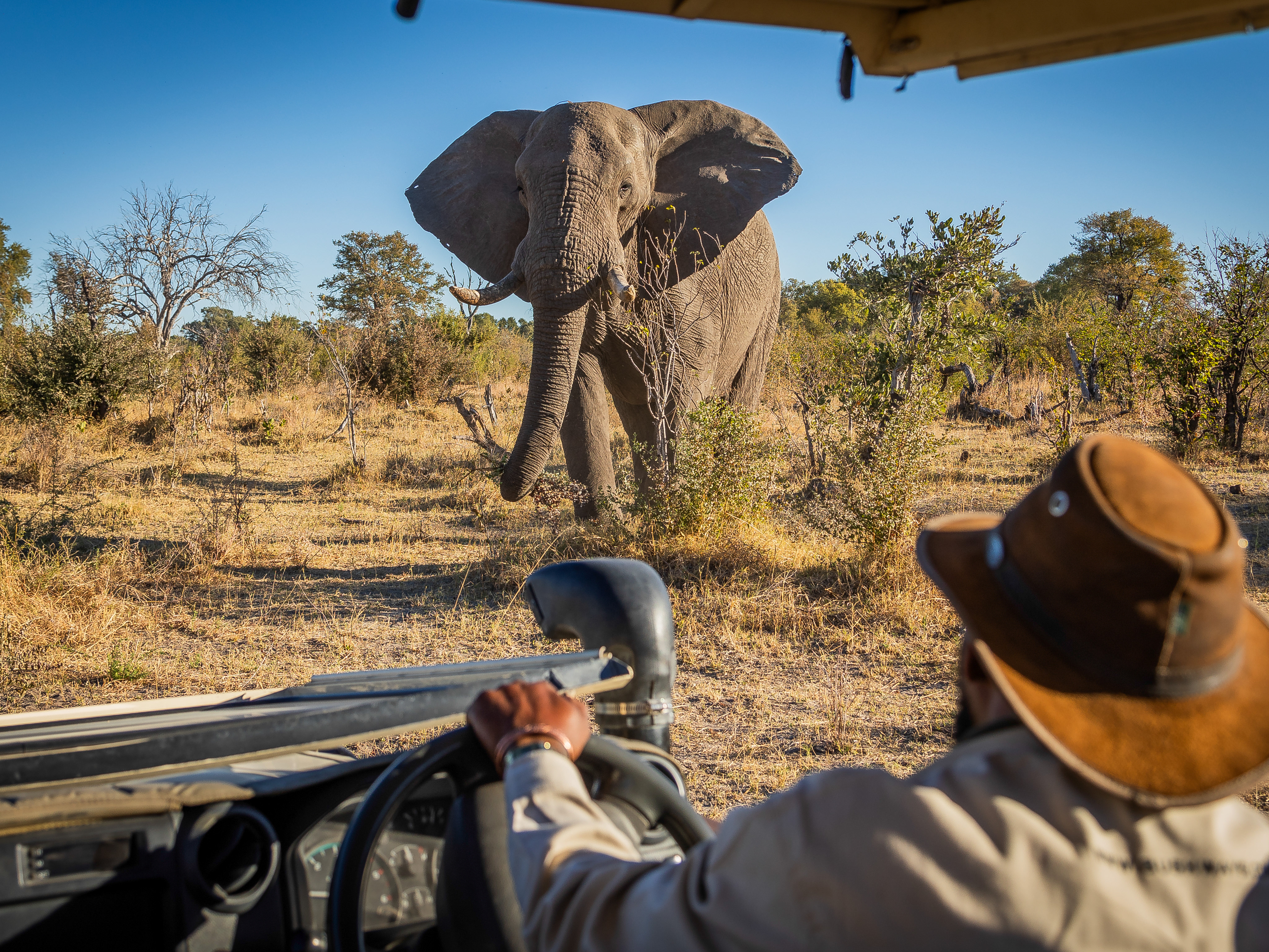One of the most exclusive tents we have ever stayed in, the Amarya Shamiyana even came complete with A/C! The only difference between this tent and a luxury hotel room was the fact that the walls were made from canvas. True glamping!
Oh, and it was one block away from the beach in Goa.
When we booked this lodge as part of our Around-the-world trip in 2002, we were initially going to spend just a couple of nights here and then go off on a three-day trek, staying in local houses along the way.
Unfortunately, clan warfare put a stop to that, and we ended up spending five nights in this delightful lodge, taking day-treks instead.
On the day of departure, we were informed that a) there had been skirmishes in the night and all the bridges were burned between the lodge and the airport, necessitating in us taking the long way round (with four armed policemen to look after us), and b) that the scheduled airline had stopped flights to the area amid security concerns, but that the owner of the lodge would pick us up in his private plane and take us to our next destination.
Just your normal sort of holiday experiences.
This auberge is on stilts on a 'floating island' in Lake Ganvie and only accessible by boat. The rooms are rickety to say the least, with thin, uneven wood flooring that wobbles when you walk, and the water from the shower goes straight through the floorboards.
They keep a monkey tied up as a pet in the courtyard, which I hate seeing.
We asked about drinks after dinner, and were told that they only had whisky and vodka. We ordered a vodka. They only serve it by the bottle. We ordered a bottle of vodka. It cost us £4 and lasted us several nights. Result!
Benin is a French-speaking country, and my French is extremely poor, but the owner's daughter was keen to practice her English which helped us tremendously.
South America 2005.
After one of the most memorable road trips ever (consisting of seven hours of loose sand, deep mud, fallen trees, chainsaws and enormous puddles), we arrived at this hostel miles from anywhere in the jungles of Guyana. It was an interesting open-sided building with a couple of showers, a huge tarantula in the sink and 15 people to one room. I was in the bed next to a guy who sang in his sleep!
The longhouse was only accessible by boat along the river, en adventure in itself as the water-level was so low we had to regularly get out and wade to get the longboat over the (usually submerged) rocks and tree trunks.
The accommodation itself was mattresses on the floor in little cubicles barely larger than the mattress and with one side open into the corridor.
Not long beforehand, Michael Palin's film on his travels to Borneo had come out, and we knew we would be staying in the same place as he had, and were rather concerned, as he had been invited as an honourable guest to kill the pig for the feast. Thankfully we didn't have to do that. We did have the same guide as Michael though. Before we left home, I scanned in the pictures from Michael Palin's book taken in the village, printed them out and laminated them. At the village, we gifted them to the chief, who was delighted as two of the locals featured had since died and this was their only photograph.
The next day we set off on a trek through the jungle with a naturalist guide who explained all the plants we saw along the way. When we reached the river again further up, staff from the lodge had taken the boat up to a clearing and were cooking freshly caught fish in hollowed out bamboo when we arrived.
While we sat on the riverside eating our lunch, we heard a commotion in the trees above us - we'd disturbed an orangutan who was breaking off branches which he was chucking down at us to get us moving out of his territory.
After finishing eating, we continued up the river to a beautiful waterfall for swimming and relaxing.
An absolutely amazing place!
With trembling excitement and anticipation we settled down in the seats and looked out of the small viewing slit to the clearing in the trees. I was still scrabbling to get my camera out when the first bear appeared. All through the night bears kept coming and going, feeding and foraging, playing and fighting, interacting with each other, climbing trees and generally putting on a great performance for the lucky few in the hide.
We’d travelled a long way to see the European Brown Bears, and they certainly didn’t disappoint. From a former border guard station, Markku and Oili run Matinselkonen Wilds Centre, a large 6,000-hectare nature reserve right on the Finnish-Russian border. To get to this pristine wilderness we took a flight via Helsinki to Kajaani, followed by a 200km journey along almost traffic-free undulating roads cutting straight through the Finnish taiga. The last part of the journey to the main lodge was on a gravel road, and from there we were taken on a dirt track for a further 20km or so before we left the car at the end of the road and continued the last 2km on foot. The path took us through pine and birch forest and over mosquito infested swamps to the small hide in a clearing.
The bears are attracted to the area surrounding the hides (there are six hides in total, accommodating between one and nine people) by a careful programme of summer baiting. The programme has been running since 2002 and now attracts a huge number of bears from across the Russian border. Since the first season, there has only been one single night that the bears didn’t show – I am really curious as to where the bears went that night. With continuous daylight through the night during the bear season, Martinselkonen is now considered the best place in Europe to see and photograph Brown Bears.
The accommodation is basically a photographic hide where guests can sit on car seats facing a narrow slit in the wall, and for those who wish to sleep, there are a number of bunk beds immediately behind the row of seats. I was far too excited to sleep and stayed up all night watching the bears. Once we are there, we are not permitted to leave the cabin until we are escorted back to civilisation again the next morning
To say this place was remote is a bit of an understatement. The journey here was an adventure in itself. We turned off the 'main road' and drove along a logging track for five hours, during which time we didn't see another vehicle! From the small village where we stayed overnight, it was a 90 minute hike to this clearing in the jungle.
A wooden frame had been built from which hammocks were hung and the whole structure was covered in tarpaulin to keep the rain out. Basic but functional. The hammock on the far right was mine - I wanted to be on the outside for two reasons, I do get a little claustrophobic at times, and also I wanted to get the most of this 'wild' experience by being closest to the jungle.
In the night I made the trek to the long drop toilet which was positioned suitably far enough away from the camp. Shining my torch on the ground, two eyes reflected back at me. Too close together to be a jaguar (we had hoped to see one in this area, but alas it was not to be), and too big to be a spider, I figured they were just about the right size for a viper or other snake.
Gulp.
Imagine my 'surprise' when the creature went straight for my head in a flap of feathers: a nigthjar. Just as well I was only going for a wee...
On Dal Lake in Kashmir, this wonderful houseboat provided us with all the creature comforts we could possibly want. Two bedrooms, two bathrooms, a living room, dining room and a large balcony, plus we had our own butler. Nothing was too much trouble.
India July 2013
A selection of old wooden homes from various part of the area gathered together in the grounds of this place. The right hand side of the cottage was our room, the left side occupied by our guide.
The lodgings also featured a restaurant with home made food, and more importantly, home made double-distilled moonshine. Our guide was one of the most knowledgeable people I have ever met and one night we got a little carried away with the moonshine while discussing everything from American politics, to Swedish children's books. The next morning out guide couldn't find his shoes - he'd left them behind in the restaurant but hadn't noticed that he's walked back to the room barefoot. Strong stuff that moonshine!
We'd spent all day driving across the arid Chalbi Desert - one of the hottest places on earth ( The thermometer said 50°C) - and arrived in the afternoon in North Horr. It was hot. Very hot.
From my journal:
"Skin caked with dirt and grime; hair matted into a knotted, twisted tangle by grit and dust whipped up by the prevailing wind; I take my filthy self straight to the bathroom. Having a shower has never felt so good! Although the temptation to stand under the deliciously cool water for hours is almost overwhelming, I am mindful of the fact that water is a scarce commodity around here. My modest effort at preserving water by turning it off while soaping / shampooing and back on again for rinsing, makes me feel a little less guilty about the fact that this is a luxury that most of the local population may never experience.
With the temperature still nudging 40 °C, we find a spot in the shade, with a cooling breeze, while our driver goes off to hire a local woman to cook the food we brought with us from Samburu.
The priest comes over and takes us both by surprise with his greeting: “Hi, I'm Father John, Would you like a beer?” Resisting the temptation to answer: “Is the Pope Catholic?”, we are even more delighted when the drinks arrive cold! The situation strikes us as rather surreal: sitting in a Catholic Mission in an oasis in the middle of a desert in Africa, drinking cold beer."
After a fun trip to the local sand dune for some jumping in the sand while the sun went down, we retire back to to the mission courtyard, chatting with the nuns while playing with the resident cat, drinking cold Tusker beer and watching the cloudless starry sky above.
Another memorable day in Howards' Travels.
We both absolutely loved this place: a scattering of thatched cabins in lovely beach fronted grounds on the Caribbean island belonging to Nicaragua. The balconies had hammocks and swinging chairs, and the bar served delicious lobster and interesting cocktails. You could rent bicycles to cycle around the island (all 11 miles of it), walk into 'town', or go snorkelling.
We reached Coconut Lagoon on our private rice barge on the Kerala Backwaters. David and I had the room on the left and my mum, who you can see taking photos of the rooms, on the right with my dad. In the middle was two girls who we happened to have been staying in the same hotel with a few nights earlier, which was quite a coincidence as we were on a private tailor-made tour, as were they.
Only accessible by boat, Coconut Lagoon is a traditional heritage hotel set among rice paddies and coconut groves on Vembanad Lake near Cochin. Our room was over two storeys in a traditional cottage with an open air bathroom.
A collection of mud huts with a couple of beds inside, a communal shower block and a restaurant made up this camp in Mali, 2001.
This is where the famous incident occurred where I spoke to Michael Palin in the nude.
Everybody asks "Who was in the nude, you or him?" when I tell them this claim to fame. "We both were".
Michael Paling was staying in the Campement during the filming of his TV series 'Sahara', and he and I were chatting in the bar when the manager came over to inform us that the water was now back on and working again after more than a day. We both walked down to the communal shower block, entered adjacent cubicles and carried on talking. And that's the story.
Flying into Iquitos in Peru in 1990, we took a speedboat for 50 miles down the Amazon River, changing into dug-out canoes for the last part of the journey up a tributary to Explorama Lodge.
The lodge consisted of a handful of thatched cabins, very basic, with just two mosquito-netted beds, a door one side and a window opening (no glass) the other side facing into the jungle.
Trekking along the wooden walkways and into the jungle to the toilet block in the night was an experience, bumping into a young tapir on the way and finding an enormous spider on the toilet seat.
Set on a hillside overlooking a valley, the small cabins were basic, but adequate. The winning highlight of our stay was the sounds of the indri (a type of lemur which is EXTREMELY loud) that went on for hours into the evening.
Apparently this is the world's only crocodile shaped hotel, not that you can tell when you are in the hotel itself.
Not my photo.
We stayed in this small cabin complete with grass on the roof on Finnmarksvidda, the frozen tundra in the north of Norway. It was cosy and warm inside, with a bedroom, bathroom and kitchen / diner / living room. We chose it because it was far away from light pollution, in the hope of seeing the northern lights. We weren't disappointed.
This very basic and quirky hotel on stilts was great until 04:30 in the morning when all the boats whizzed past on their way to the floating market. I was perfect, however, for exploring the life on the lake.
Myanmar 2001
A few years ago we were lucky to stay in a gypsy caravan for a few days. To say it was cramped is an understatement, but it was a lot of fun. Photo taken by David.
We have stayed in quite a lot of unusual accommodation over our 42 years of travel, but this has to be near the top when it comes to bizarreness: a converted 1965 Wessex Search and Rescue helicopter. Set in a lovely woodland in Dorset, it is surrounded by a double decker bus, a gypsy caravan, a couple of tree houses and a fire engine – all available for hire.
The main part of the helicopter has a seating area which converts to a double bed at night, while the tail has a mattress where a further two people can sleep. We were there with friends during a very cold November weekend a few years ago, and being slightly crazy, we dressed up as aviators for our maiden flight.
Having reached Dandeli town, it's a matter of finding our lodge. Many other places advertise their resorts on huge posters along the side of the road, but not ours. If in doubt, ask someone. Then someone else. Then turn around and travel 30 kms in the opposite direction down winding country roads flanked both sides by hectares of teak forest, interspersed by huge fields of sugar cane.
Finally we see the sign for Hornbill River Resort, and turn off the main road down a dirt track until we find the accommodation, spread over a gentle slope down towards the Kali River. Our room is the one nearest the river, perched some 30 feet up a tree! A large room overhanging the water, one wall open to the elements (no window glass, but with pull down mosquito blinds), overlooking the rapids.
Having a pre-dinner drink of local Indian rum, we sit and watch the hornbills soar over the river, returning to roost as dusk falls. Heaven.
I wonder if taking a night time jungle walk after two large rums is a good idea, but perhaps that is what gives me the extra confidence to walk along paths where I may otherwise have been concerned about not being able to see where I am placing my feet.
The jungle is very dark and very quiet, save for the noise of the nocturnal critters. I didn't expect to see many large animals – although bison and barking deer do come here during the rainy season – but we do see some flying squirrels, various insects, spiders and lizards. On leaving the forest for the clearing, the guide carefully picks the leeches off our shoes and clothing.
Climbing the stairs to our treehouse, we settle down in the large double bed for the night. Despite the evening chill, we leave the blinds up, which means the room is open to the elements on the side facing the river. The two resident dogs keep any monkeys away, so all we have to worry about in the night is various insects. We do hear a gecko barking, but we never see him.
The gentle swaying of the trees (and therefore also our room) rocks me off to a contented sleep.
During the night a couple of flying squirrels scuttle across our roof, and a spider and various other small insects drop by, but we see surprisingly few mosquitoes – too cold, I guess, it drops to 8°C (46°F) in the early hours.
When I open my eyes in the morning, I am so pleased we left the blinds up, as I am able to see the sunrise from bed! And what a sunrise it is! A gentle mist hangs over the water and the entire river is bathed in a pinky-purple glow.
Not long after sunrise, while we are still sitting on the balcony overlooking the river, a fish eagle lands on the branch just next to our room.
What a fabulous place this turns out to be!
Way back in 1982, we stayed in one of these floating huts on the River Kwai near Kanchanaburi in Thailand. The rooms were basic, with just a couple of mosquito-netted beds, the toilets being at each end of the string of rafts.
Kirurumu Tented Camp, a three storey tent!!!
In 2011, on our second visit to Tanzania, we were staying in mid-lower market camps throughout our trip.
Being shown to our rooms on a ridge overlooking Lake Manyara National Park, the accommodation initially looked rather uninspiring: a wooden door in a stone wall.
Once inside the gate, however, we found ourselves on a wooden walkway leading to a tented room with a large four poster bed, a simple wardrobe / dressing room plus a seating area and a lovely balcony overlooking the valley below.
It was only once we explored the inside of the tent properly, however, that the real wow-factor took effect: as I said earlier, the tent was perched on the edge of the cliff-face, and at one end of the tent was a staircase leading to a mezzanine floor below with another double bed, a shower and toilet, all set into the natural rock face.
Further steps took us down to another indoor seating area as well as a lower balcony.
Never before or since have we stayed in a three storey tent! Wow!
After a gruelling journey across the desert. we arrived at a small settlement near Lac Abbé in Djibouti. We were staying in traditional huts as used by the Afar people, who herd their cattle and goats in this barren and desolate area.
Each hut had just two metal-framed beds, and as you can see, the opening is very low. To one side of the camp was a communal toilet and shower. In the evening we were entertained by the locals and the next day we got up early for the sunrise over the lake.
Sharing gender-segregated dormitories with local pilgrims, and washing in the very communal ablutions halls (just a long trough with several taps), the highlight was the monastery itself. We were lucky to be able to drive most of the way there, whereas many of the pilgrims had walked up the very steep tracks to reach this site.
Palace of the Lost City - not my photo
This supposed six-star hotel sports opulence beyond my wildest dreams. As soon as we arrived, the manager herself showed us around the hotel, explaining where everything is and pointing out all its amenities. From that moment, all the staff instinctively knew and used our names when addressing us. Everything you'd expect from such a luxury hotel was present and correct, and we enjoyed phoning down from our room to reserve our sunbed by one of the many pools (including one complete with a sandy beach and a wave machine).
Sun City resort was created from scratch in the desert in the then 'independent' country of Bophuthatswana in the 1970s.
As Bophuthatswana had been declared an independent state by South Africa's apartheid government (although unrecognised as such by any other country), it could provide entertainment such as gambling and topless revue shows, which were banned in South Africa, and it soon became a popular weekend destination for wealthy South Africans.
We'd rented a teepee for three nights during a tour of South Wales a few years ago. It was May, but the weather gods apparently still thought it was winter: we had a blizzard and -3°C (26°F) in the night. We had come prepared, however, so were able to dress in many layers, we had brought our own quilts and a number of blankets were provided. While there was no heating inside the teepee, lots of little lanterns provided us with a warm cosy look as we snuggled up listening to the howling wind outside.
The next morning when the owner arrived on site to check that her teepees were still standing after the storm, she was extremely surprised to find us still there, having fully expected us to chicken out and go home. Not us, we love an adventure!
Iran 2007. We have arranged to spend some time with a Qashqai nomad family, but the problem is where to find them. By the sheer nature of their nomadic life, they move about a lot. But as we know more or less which area they’ll be in, we drive along the road until we come across their tents.
The Qashqai Nomads originally came from Azerbaijan, but were forced out by the Mongols. These Turkic-speaking people are the most educated of all the nomadic tribes in Iran. Many of the Qashqai have now settled, but around 300 people (all related in some way) live the traditional nomadic existence in this area. Iran is said to be home to the largest concentration of traditional nomads in the world.
Iranian hospitality is legendary, and the Qashqai nomads are no exception. As soon as we arrive, we are invited in for the ubiquitous tea. Their tent is black and large, and the whole family sleeps in the one tent. One of the side walls is rolled up during the day and then lowered at night. We are guests of Dastani, his wife, two children and mother-in law. All the people in this area are related, as I mentioned before, and Dastani’s wife is related to him. It does sound a little incestuous to me.
While we are enjoying tea, more families arrive, and it is fascinating to watch them erect their tents and set up their camps. Everybody gathers around to help their ‘new’ neighbours, and each family have the same pitch from year to year. Many of the families use trucks to transport their goods these days in addition to the donkeys. It is rumoured that Nissan named their all-terrain vehicle Qashqai in a bid to attract buyers from this and other Middle Eastern nomadic tribes.
The children have a portable primary school as part of the settlement, but for secondary education they go to boarding school in Shiraz.
This nomadic tribe herd about 500 sheep and goats from place to place. With more and more privately owned farms springing up, moving is a major problem for the Qashqai, blocking their normal route, and many accidents happen as they move their huge herds along the main roads.
Another problem they face is that the animals are often attacked by a biting insect which gives them symptoms almost like a human cold – coughing and sneezing. It is not fatal and they get over it on their own accord without any outside treatment. It is quite strange to hear them though. One of the lasting memories from our stay with the Qashqai nomads is hearing the little sheep sneeze.
One of the most surreal moments is when one of the nomads turns up on his motorcycle (they use motorbikes and trucks a lot to get around) with his video camera to film the visitors (us). In their winter camp, these families have electricity as well as an internet café, and they are very keen to keep a memento of our stay. We have to introduce ourselves in turn to the camera, say our name and where we are from.
We spend the early part of the evening sitting around the camp fire, playing music on our guide Reza’s mobile phone (singing is not allowed in public in Iran for women, so no song around the camp fire unfortunately. Dancing in public is not permitted for either gender) We do have quite a laugh though, even without alcohol, singing or dancing. When it gets too cold to sit outside, we retire to inside the tent where the canvas at least keeps the wind out.
Inside is very cosy, with a paraffin lamp to light up the tent and cushions along the walls. The ground is hard, as all we have between us and the hard muddy surface is a thin rug. No mattress. Just a rug.
Dinner is provided for us: a beautiful eggplant khoresh (a type of stew made with lamb and eggplant – very tasty). There is of course mountains of rice as well as the beautiful Iranian bread, and for afters we have melon.
After dinner the local men entertain us with playing the flute. I am very impressed with how they can make one single instrument take on several different types of sound, from the hauntingly sad to the joyous and cheerful.
We are to spend the night here in the wilderness, and there will be nine of us sleeping in the same tent. I have to say it is not the best night’s sleep I’ve ever had! Within minutes of settling down, I can hear three people snoring, which causes a lot of giggling. There are a couple of people who are constantly shuffling too. Not to mention the goats outside, and the dog howling because there is a wolf about. Then there are the donkeys. We can hear the chickens as well. Not to mention the sheep. And the goats. Have you got the idea yet?
It might have been noisy and uncomfortable, but it was certainly a cultural experience to remember and cherish.
I quickly re-named this hotel "The Nipple Lodge", for obvious reasons. While spectacular to see from a distance, this lodge was not my style: it was far too big, dinner was served buffet style (I much prefer to be served at the table), and the rooms were way too hot. The position is great, however, up a long, bumpy track close to all the safari action of Central Serengeti.
We spent two weeks sleeping on this train as it made its way from Cape Town to Johannesburg. The train travelled by night, and in the morning it unloaded a fleet of mini buses to take the passengers off sightseeing for the day, to return them to the train for dinner. The cabins were small, with a shower and toilet at the end of each carriage. Two dining carriages and a bar completed the set-up.
Positioned near the high altitude lake of the same name, this yurt camp is found at 3,016 m (9,895 ft) above sea level. The day before we reached the camp, there had been an unexpected heavy snowfall, resulting in the collapse of all the yurts. The owners had only been able to re-erect the three yurts you see here, the left one for cooking and eating, the middle one for their family and the right one for the 17 of us. To say it was cramped was an understatement. When visiting the long-drop toilet in the night, negotiating the sleeping bodies and trying not to shine the torch in anyone's face was quite a challenge.
The famous hotel on stilt - where Princess Elizabeth is said to have been staying when she was informed that she had become the Queen of England. The rooms were simple, with leaking roofs and basic en suite bathrooms. The rooftop terrace was the star of the show, with bird feeding stations and views over the plains below. The hotel offered a facility where you ticked a list of animals before going to bed, and they would wake you up of any of those animals appeared at the waterhole overnight. Our room overlooked the waterhole, so we didn't even have to get out of bed!
This area of Libya is studded with underground homes, cut out of the rock. Basic rooms and shared bathrooms, but a great experience. The evening became extremely cold, and we all took blankets from the beds to warm ourselves while we were eating dinner and relaxing afterwards.
Back in 2013, we toured Ladakh in the Indian Himalayas, and after an exhilarating – and sometimes terrifying - journey across the third highest motorable pass in the world, we arrived at Pangong Lake near the Chinese border.
Although we travelled downhill from the pass, Pangong Lake is still an impressive 4,350m (14,270ft) above sea level, and we were to spend the night in a tented camp.
From my journal:
The tents are on a raised concrete platform and are reasonably roomy, with two beds and a small table, and ample room for the luggage. On a further raised platform is the attached toilet and basin. Outside is a small 'balcony' with two chairs overlooking the lake.
The sun makes a half-hearted attempt at a sunset, but has to give way to more dark storm clouds and there is even some precipitation in the air during the evening. Nothing comes of it though, at least not by the lake.
It is incredibly windy – all the tents have been anchored down using huge rocks – even inside our tents they've placed a rock to stop the whole side of the tent blowing in. As I am getting ready for bed, this rock promptly falls on my leg and grazes it, and later we find the wind is so strong that the canvas is simply torn apart by the rock.
Despite wearing all my clothes (including thermal pants and top plus a fleece, hat and gloves) and being covered with a thick quilt and a blanket; I am cold in bed. I check the thermometer, which shows 7°C (45°F) inside the tent. When I finally manage to get warm, and stop panicking that I can't breathe, I go in to a deep sleep.
I had been rather worried about sleeping at this altitude as this is another first, but I needn’t have worried – I have the best sleep I've had since we arrived in Ladakh! All the other mornings I have been awake by 04:00 at the latest, but this morning I slept in until 06:00 and missed an amazing sunrise apparently.
One of the original 12th century travellers' inns on the fabled Silk Road, the main trade route between Asia and Europe. The caravanserai is a two-storied structures, with a 16-sided courtyard and a water pool. Restored to a near original state, the rooms are on a raised base and mattresses are provided on the floor, which are covered with carpets. There is no door separating the rooms from the corridor, with only a curtain providing privacy to the occupants. However, the cshared bathroom facility is well fitted.
Deep in the heart of Wahiba Sands Desert, 1000 Nights Camp offers authentic Bedouin-style camping without comprising on comfort. Deluxe tented accommodation feature private balconies and open seating areas for uninterrupted views of the nights’ sky. In keeping with the authentic Bedouin feel the evenings were be lit by candlelight and lamps and we had an amazing view of the night sky. At sunset we'd scale the dunes for amazing sunset vistas.
The sink hole of Darwaza was created in 1971 when the Soviets were drilling here and ruptured a gas seam. In order to avoid an environmental disaster, they set fire to the gas, expecting it to burn out in a few weeks. It is still burning.
I was expecting to be pitching my own tent near the crater, so was pleasantly surprised to discover that a local travel company has built a few semi-permanent yurts close by. The accommodation features comfortable beds and a nearby shower and toilet block.
This is the only hotel we have stayed in that has been built inside the caldera of a volcano. Fairly basic, but a great location for exploring the village and climbing Big Pico volcano.
Located in the village of Ure, these rorbuer (fisherman's houses which are constructed on land, but with the one end on poles in the water, allowing easy access to vessels) were well furnished and offered a good view over the inlet.
Just eight rooms make up this eco lodge situated in a bird reserve of the same name. The room was basic, with a mosquito screened double bed, and a bathroom with cold bucket showers only.
The highlight here - in addition to the extremely friendly staff - was the bird drinking station set up in the ground, which was frequented by numerous different species as well as monkeys, throughout the day.
